Traditionally, every blockchain has been functioning as an independent system. It was not able to cooperate or exchange information with others. This has capped the possibility of having a well-connected decentralized ecosystem until Polkadot came. Polkadot is an innovative blockchain solution with a unique multi-chain structure that will allow blockchains to interact and function in an integrated network. In this article, we’ll discuss Polkadot, how it operates, and its enhanced version, Polkadot 2.0.
What is Polkadot?
Polkadot is a next-generation blockchain platform. It is focused on improving the interoperability between blockchains. It is based on a multi-chain framework, where parachains (individual blockchains) are connected to the relay chain for validating transactions. The relay chain is the core of the Polkadot blockchain. It is responsible for the security of data transfer between parachains. Also, they can communicate with other blockchains through bridges, facilitating cross-chain interaction between independent blockchains.
Unlike most blockchains, which are based on Layer 1 and Layer 2, Polkadot has built its blockchain on Layer 0. It was created to address some of the key concerns in the sector, including scalability and compatibility. This aids blockchains in operating smoothly, making the network capable of supporting highly complex applications without becoming congested.
Polkadot has a token called DOT, which acts as the blockchain’s native currency. Compared to other native currencies, DOT facilitates staking, rewards, governance, bonding, and more. Also, it has an infinite supply, which ensures a token supply for activities like bonding and staking.
Chainlink Review: Bridging Blockchain with Real-World DataHistory of Polkadot
In late 2016, Dr. Gavin Wood, one of the co-founders of Ethereum and former CTO of the Ethereum Foundation, published a whitepaper about Polkadot that could make up for what Ethereum set to do. Later, in 2017, Wood co-founded Web3 Foundation, a non-profit organization that focused on supporting the development of decentralized technologies and had the dedication to help create a decentralized internet called Web3.
A blockchain development company called Parity Technologies, whose co-founder was also Wood, was responsible for developing core technologies, including the Substrate framework for the Polkadot blockchain. Regarding the Polkadot network, Web3 Foundation was in charge of managing it, while Parity was responsible for the developments. Other than Wood, Robert Habermeier and Peter Czaban were instrumental in the creation of the blockchain.
During the ICO in October 2017, Polkadot managed to raise $145 million in just two weeks. However, nearly $90 million of the funds that were raised through the ICO were frozen permanently due to a vulnerability in the multisig wallet code. But, the team behind Polkadot confirmed that they had enough funds for the development of the blockchain.
In September 2019, Kusama, an early version of the Polkadot code, was launched on a canary network. Now, Kusama and Polkadot are two independent blockchains, and developers, before releasing new updates on the DOT network, would test it on the Kusama network.
The Polkadot network was designed with a multi-stage launch in mind. The first phase of the blockchain was launched in May 2020. The major feature of the DOT blockchain, Parachains, was launched in December 2021. Polkadot 2.0, a significant upgrade to the existing Polkadot, has started to roll out in May 2024.
How Does Polkadot Work?
The relay chain is the backbone of the entire Polkadot structure as it connects many parachains into a single network. It has multiple functions that include managing all communication between different Parachains, providing secure communications between these chains, and verifying the entire blockchain network. Furthermore, as the relay network is a layer 0 blockchain, it does not support smart contracts.
Parachains are independent blockchains that have their own set of rules, logic, and environment. They are layer 1 networks that run parallel to the relay chain and have application-specific data structures. This makes it possible to scale within the network much better and allows parachains to interact with other chains effortlessly. In addition, as layer 1 blockchains, they support smart contracts and enable the development of decentralized exchanges, dApps, bridges, and others. They also relay block data to the mainnet, which is commonly referred to as a relay chain.
Different from other blockchains that rely on consensus mechanisms such as the proof of stake or proof of work, Polkadot uses Nominated Proof-of-Stake (NPoS). NPoS aids in maintaining the network’s security through – validators, nominators, and collators.
Validators
Validators are responsible for validating and securing the Polkadot network. They validate parachains and ensure the blocks are constructed in accordance with the rules. After they have been verified, parachains are included in the relay chain. Once all the parallel chains have been verified, they validate the relay chain. To become a validator, participants need to stake large amounts of DOT, and the amount required to become a validator may change in the future. Furthermore, when a new block is added to the relay chain, 20% of the block rewards are distributed to validators as rewards.
Nominators
Nominators are an essential part of the consensus mechanism in Polkadot. They select a reliable validator who they think will work for the benefit of the network and invest their DOT tokens with the chosen validator. In return for nominating a validator, they receive a commission.
Collators
The role of Collators involves gathering transactions from parachains and organizing them into what is known as the parachain blocks. They do this by having a full node for each of the parachain and the relay chain. These parachain blocks are transmitted to the validators who validate the blocks, and then these blocks are incorporated into the relay chain.
Polkadot Cross Chain Messaging (XCM)
XCM is a protocol in the Polkadot ecosystem that was designed to facilitate communication between different parachains (individual blockchains) and external networks. They enable different blockchains to exchange messages and data with each other regardless of the state transition functions and consensus algorithms. This makes it possible for parachains to have their own unique characteristics of the system while simultaneously being capable of interconnecting in a more efficient and secure manner.
Comprehensive Review on Bitcoin: History, Working and RisksPolkadot 2.0
Polkadot 2.0 is an upgrade of the existing version, specifically developed to solve the various issues in Polkadot 1.0. The previous version had many problems, such as inefficient resource use, slow block time, limitations to project development, economic constraints due to slot auctions, and more. To solve these fundamental issues and to inject new vitality into the project, Polkadot 2.0 was developed. The upgrade brings with it new features, like,
Asynchronous Backing
The first new rollout is asynchronous backing, which was designed to improve the blockchain’s efficiency by increasing its speed, accessibility, and functionality without losing its security. In the current Polkadot 1.0, each block of the parachains must rely on the latest block for anchoring with collators, which is called backing. However, asynchronous backing breaks this cycle by allowing collators to anchor parachain blocks against historical relay chain blocks. This method allows parachains to be no longer limited to the relay chain and can drastically improve their efficiency and scalability. Earlier, one needed to wait for a long time before a block was created, but with asynchronous backing, a block can be created at a speed of 6-12 seconds. Furthermore, it also allows the parablocks to store 2 to 4 times more data, which allows creators to develop large-scale applications without worrying about the delay in block speed.
Agile Coretime
In Polkadot 1.0, to secure a parachain, you need to lease it through an auction. This usually involves staking large amounts of DOT, which poses a large issue for small and medium businesses. Furthermore, parachains only produce blocks at an interval of 12 seconds, leading to a waste of resources because during lighter traffic, empty blocks may be produced, and in heavier traffic, blocks can’t handle the load. Agile Coretime solves this problem by ensuring blockspace resources are efficiently allocated across the network. It takes away the entry barriers, allowing small businesses to buy coretime in small amounts, and also allows bulk purchases. When compared to new orders, preference is given to renewal orders, which helps protect parachains from any price fluctuations.
A significant advantage of Agile coretime is that it can motivate holders who hold small amounts of DOT tokens to develop their own parachain in the network. As there is no need to stake large tokens to lease parachains, and one can directly buy or lease them, the liquidity of the token will increase drastically.
Elastic Scaling
When compared to the current allocation of resources and power, elastic scaling helps the network distribute them in a fair manner across all parachains. This is especially useful for parachains that are developing large applications, whose workload and data would be large and require more help from the blockchain and coretime to improve their scalability and efficiency.
Conclusion
Polkadot has marketed itself as a game-changer in the blockchain landscape, solving some of the most profound issues, such as scalability, interoperability, and security. Parachain and relay chain structures allow blockchains to operate as standalone blockchains while sharing the same security and interconnectivity. Regarding enhancements, Polkadot 2.0 has brought various improvements like asynchronous backing, agile coretime, and elastically scaling. Based on the development observed in Polkadot, there is potential to create a connected and decentralized world, thus making it a game-changer in the Web3 scene.






